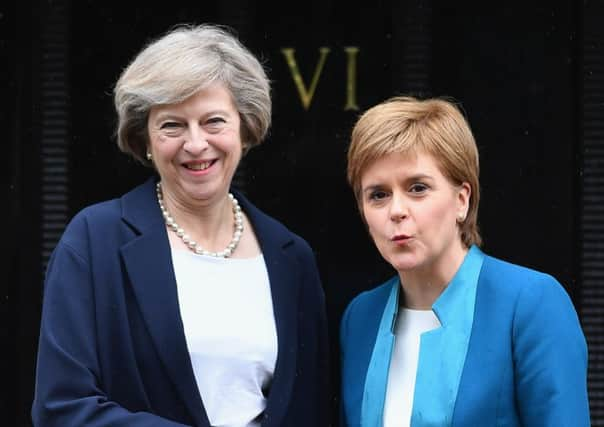Ian Swanson: The shape of things to come remains obscure


The shock result of the EU referendum shook politicians not only here, but around the world. Even those who campaigned for Leave were taken aback. And it took some time for the reality and the repercussions to sink in.
The long and laborious task of extricating the UK from 43 years of entwinement with Europe has begun, but it is a slow and difficult job.
Advertisement
Hide AdAdvertisement
Hide AdAnd Theresa May and her ministers have yet to reveal - perhaps even decide - what they want to see replace the relationship which is being dismantled.
The Prime Minister’s soundbites - ‘Brexit means Brexit’, ‘Red, white and blue Brexit’ - tell us nothing. And when other senior figures make comments they either contradict each other or are slapped down by Mrs May.
The Government has promised, however, to publish an outline of its approach before the end of March, when it plans to trigger the Article 50 negotiations for withdrawal.
So a clearer picture could emerge over the next few weeks - or maybe not. The undertaking was only given to stop backbench Tory rebels siding with the opposition in a Commons vote on Brexit last month.
Advertisement
Hide AdAdvertisement
Hide AdAnd while the outline could be a full explanation of what Mrs May and her colleagues want to achieve, it could equally prove to be a rather brief and unrevealing form of words.
Before all that, the judgement is due this month from the Supreme Court upholding or overturning the High Court ruling that the Government cannot invoke Article 50 using its royal prerogative powers and a vote by MPs is needed.
The judges are also expected to give their verdict on the Scottish Government’s claim that a vote in Holyrood is essential too.
The argument, put to the Supreme Court by Lord Advocate James Wolffe, is that since withdrawal from the UK will affect areas of responsibility which are devolved to Scotland, the consent of the Scottish Parliament is required.
Advertisement
Hide AdAdvertisement
Hide AdEven if the court does not accept this view of procedure, the political argument for Holyrood to be given a say remains and will no doubt be pressed by Nicola Sturgeon.
The First Minister has already set out how she believes Scotland could secure a distinct relationship with the EU, retaining membership of the single market, even if the UK leaves. She acknowledges it will not be easy, but as she remarked, everything about Brexit is complex.
The Article 50 negotiations could also be hampered on the EU side by the looming elections in France in April, where there will almost inevitably be a shift to the right, and in Germany later in the year, where current chancellor Angela Merkel is under pressure. The position adopted by the EU towards the UK over withdrawal would necessarily be influenced by changes in who is control in the most powerful member states.
So the shape of Brexit could well remain uncertain for some considerable time, which will have an impact on the economy and society.
Advertisement
Hide AdAdvertisement
Hide AdScotland voted clearly against leaving the EU and that position deserves to be respected. Mrs May likes to dismiss talk of “hard Brexit” or the “Norwegian model” by insisting the negotiations will instead produce a “bespoke” deal for the UK. But given the different votes north and south of the border, what about a bespoke deal for Scotland?